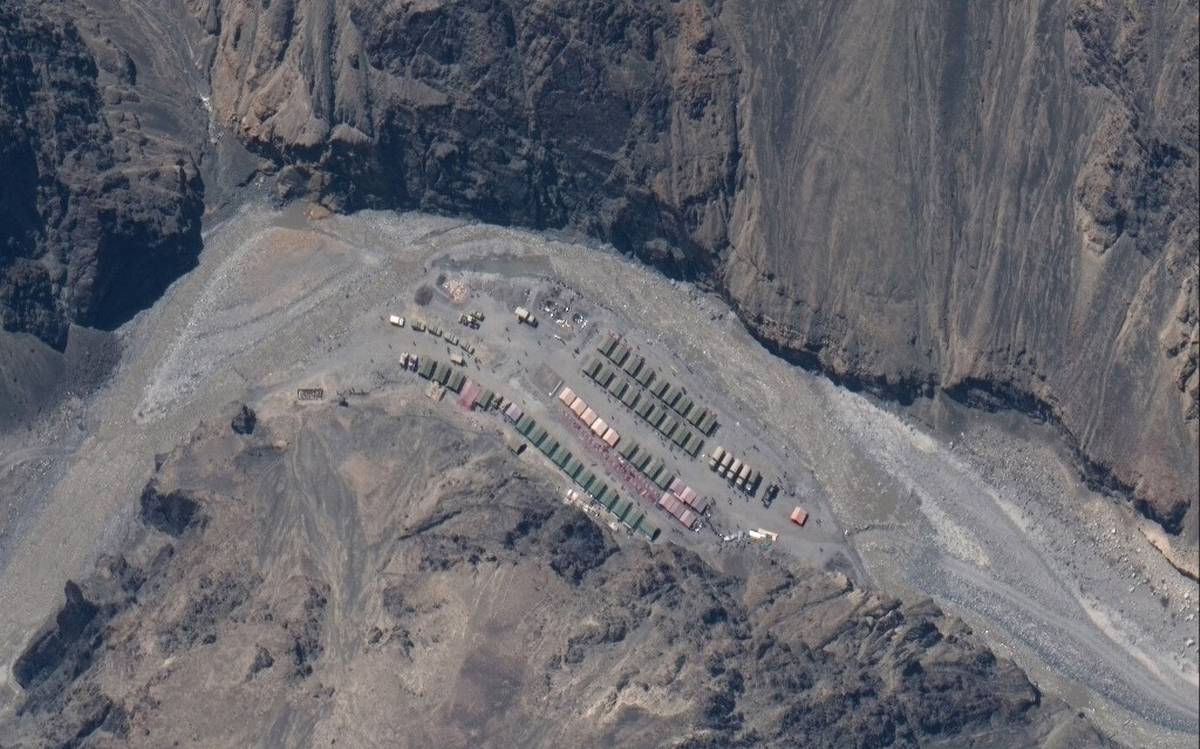Two images of the Galwan Valley — obtained by NDTV from Maxar — make the change in position clear.
New Delhi, July 8:
The Chinese soldiers’ two-km withdrawal as part of the disengagement procedure in Ladakh has been backed up by high resolution satellite images from the bend of the Galwan river as it crosses the Line of Actual Control and flows into territory held by India. The disengagement process had started after Sunday’s Special Representative-level talks between National security Advisor Ajit Doval and Chinese foreign minister Wang Yi. Now, both Chinese and India troops are withdrawing by 2 km from three spots in Ladakh – Galwan Valley, Hot Springs and Gogra – leaving a buffer zone in between.
Sources said the Chinese are now firmly on their end of the Line of Actual Control – the de-facto border between India and China.

Satellite image obtained from Maxar on June 28 shows Chinese structures in the region
Several images of the Galwan Valley — obtained by NDTV from MAXAR — make the change in position clear.

Satellite image from July 6 show the structures have been removed from the area
The earlier photo, obtained on June 28, showed Chinese structures on both sides of the Line of Actual Control. The images showed possible defensive Chinese positions at the site and several structures that could be shelters for the soldiers built along the rock-face leading up the LAC.

Long shot of the satellite image showing Chinese structures in the area
The images indicated that the Chinese has made a 423-metre incursion into Indian territory, which seems well ahead of Beijing’s own 1960 Claim Line in the region.

Long shot of the satellite image show Chinese structures have been withdrawn from the area
The photo of the same spot, obtained on Monday, shows the structures have been dismantled and the area is clean.
The spot is near Patrol Point 14, where Indian and Chinse troops had fought a pitched battle on June 15, using clubs, iron rods and stones. Twenty Indian soldiers were killed in action. Senior officers in the Indian Army believe the Chinese suffered approximately 45 casualties, including a Colonel, who was killed in the fighting.
After Sunday’s talks, New Delhi said that the two sides have agreed to “take guidance from the consensus of leaders” and “not allow differences to become disputes”. They also agreed that “both sides should complete the ongoing disengagement process along the LAC expeditiously,” the statement added.
Government sources told NDTV that they are “cautiously hopeful” of a Chinese pull-back from all areas by the middle of July, by which time military leaders are expected to hold another round of high-level talks.




